On 1 June 2025, we introduced new requirements for safety management systems (SMS).
These changes affect all domestic commercial vessels. Find out what you need to do.
A hook-up is potentially one of the most dangerous situations on a trawler. A trawler can easily roll over with crew becoming trapped underneath and drowning. Circumstances can differ each time a trawler hooks-up—usually a mix of sea conditions, trawler stability and crew actions. Each crew member needs to understand that a practiced and considered set of actions is the best response. Your life may depend on it.
To give yourself the best chance of recovering from a hook-up, it is important to ensure that your trawler is properly prepared for a hook-up before you leave port.
Mark Millward is an experienced Queensland prawn and scallop trawl fisherman who has built trawlers using his practical understanding of vessel stability factors important to trawling. In the video below, Mark explains precisely how to prepare a trawler in port so that it is best ready to help achieve recovery from a hook-up. He then explains the different types of hook-ups such as mud, shale and rock, that can occur in trawling and the steps needed to respond and recover from each type of hook-up.
Hook-ups are not unique to prawn/scallop trawling and can be a danger in other bottom trawl fisheries.
Below are some general tips to address trawler hook-ups. Masters and crew of fishing vessels trawling the seabed should familiarise themselves with these and include a hook-up plan for your vessel in the emergency response procedures in your vessel’s safety management system.
What to do if you're in a hook-up situation
Steps 1–4 should be completed within 20 seconds.
1. Reduce power
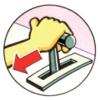 When you hook-up, the effect on trawler stability is immediate. You must act quickly and slow the trawler to the lowest possible speed to maintain steerage, making sure the nets do not become further entangled. Keep the trawler as level as possible, and at the same time, consider whether it is appropriate to manoeuvre the trawler so:
When you hook-up, the effect on trawler stability is immediate. You must act quickly and slow the trawler to the lowest possible speed to maintain steerage, making sure the nets do not become further entangled. Keep the trawler as level as possible, and at the same time, consider whether it is appropriate to manoeuvre the trawler so:
- the bow of the trawler is facing the prevailing conditions, and/or
- the snagged wire is as close as possible to the stern—but do not allow the wire to pass midway behind the stern toward the other side of the trawler
2. All crew on deck and close hatches
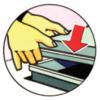 Yell out or sound an alarm and make sure that everyone on board goes to their hook-up response position. Close all deck hatches and do not start winching equipment until everyone on board is on alert and ready to respond. If you are not sure what to do or the skipper has not given you a job, stay away from the back deck and wait at the vessel’s muster station until further instructions are given.
Yell out or sound an alarm and make sure that everyone on board goes to their hook-up response position. Close all deck hatches and do not start winching equipment until everyone on board is on alert and ready to respond. If you are not sure what to do or the skipper has not given you a job, stay away from the back deck and wait at the vessel’s muster station until further instructions are given.
3. Alert other vessels in the area
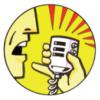 Send out a general radio communication alert to other trawlers/vessels in the area.
Send out a general radio communication alert to other trawlers/vessels in the area.
4. Lifesaving equipment in float free position
Never start winching until all safety equipment is ready to go.
 Make sure all crew are wearing a lifejacket and the EPIRB and your grab bag is readily accessible. Make sure the life raft/dinghy are clear of any obstructions. Do not start winching until all safety equipment is ready to go.
Make sure all crew are wearing a lifejacket and the EPIRB and your grab bag is readily accessible. Make sure the life raft/dinghy are clear of any obstructions. Do not start winching until all safety equipment is ready to go.
5. Move trawl cables to the side of the vessel
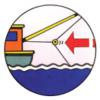 If possible, retrieve and secure any unsnagged equipment before winching a snagged net. The lever effect and strain on trawl arms, when winching up on a snagged net, is very high and the trawler may rollover in either direction without warning. During a hook-up you must ensure that a competent crew member is at the winch at all times and at no stage is the winch left unattended.
If possible, retrieve and secure any unsnagged equipment before winching a snagged net. The lever effect and strain on trawl arms, when winching up on a snagged net, is very high and the trawler may rollover in either direction without warning. During a hook-up you must ensure that a competent crew member is at the winch at all times and at no stage is the winch left unattended.
To minimise the likelihood of a rollover the lever effect must be kept to a minimum. The skipper is ultimately responsible for the vessel and all persons on board and should stop and think about their response—allowing a few moments (or minutes) to consider the prevailing tide and sea conditions—before giving instructions.
While winching never stand between the winch and the nets.
Depending on your set-up, once the trawler is over the hook-up site, and sea conditions are suitable, both trawl wires should be moved to the side or stern of the trawler before any pressure—over and above normal trawl wire pressure—is applied through the winch. When winching, do not stand anywhere between the winch and the nets and stay well clear of pulleys or wires. If a pulley or shackle fails you could end up with severe injuries if the wire makes contact with your body.
6. Be ready to cut the trawl wires
You can usually recover equipment, but you cannot recover someone’s life.
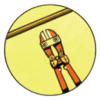 Place cutting equipment beside the snagged winch and be prepared to cut the trawl wires—you must keep this option open at all times. Be careful not to rely on equipment that requires electrical power to cut cables because the electrical supply is likely to be lost if the trawler is taking water—there is also a risk of electrocution.
Place cutting equipment beside the snagged winch and be prepared to cut the trawl wires—you must keep this option open at all times. Be careful not to rely on equipment that requires electrical power to cut cables because the electrical supply is likely to be lost if the trawler is taking water—there is also a risk of electrocution.
While recovering the snagged net, if you are unable to keep the snagged trawl wire over or beside the stern or directly forward of the bow you may have reached the point of no return. Put the trawler in neutral and cut the snagged wire. If you have time, and conditions permit, attach a marker buoy to the trawl wire before cutting it loose.
7. Move to high side of the vessel
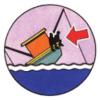 The safest place to escape in the event of a rollover is over the bow of the trawler. However, if you are elsewhere, and it rolls to one side, be ready to move to the high side of the trawler. If you are on the high side and forward of the trawl arms you have the best chance of jumping free without getting caught up in the trawler’s structure.
The safest place to escape in the event of a rollover is over the bow of the trawler. However, if you are elsewhere, and it rolls to one side, be ready to move to the high side of the trawler. If you are on the high side and forward of the trawl arms you have the best chance of jumping free without getting caught up in the trawler’s structure.
When a trawler hook-up occurs
You need to understand a few basic principles when a trawler hook-up occurs.
Avoid panic
This is nearly always stated in emergency response procedures and for good reason—because people who don’t know what to do nearly always panic. If you practice and time your emergency response—for example, getting all safety equipment in the float free position—you are less likely to panic when the real situation arrives.
A few drills could save you in an emergency situation.
Contain the situation
Always think about how you can prevent a hook-up situation from getting worse. Trawlers have rolled-over following an hour of unsuccessful attempts to recover gear so before the next hook-up, discuss the what, how, why and when of a hook-up response with your skipper or other operators.
Have a plan
Prepare the wheelhouse and forecastle so that you and other crew can get out if the trawler is upside down. Ask other deckies and skippers about how they might get out of a trawler that has rolled over.
While the best answer will always be, ‘when you hook-up, get out of the wheelhouse’ understand what it means to get trapped under the water and how to improve your chances of survival.
Owners must ensure the skipper is familiar with the characteristics of the trawler including stability, freeboard, loading, maintenance and water integrity.
The skipper must ensure that crew are properly informed about safety issues and trained to respond to different emergency or high risk situations. This includes emergency drills to ensure crew understand their respective roles, where the equipment is stored, how lifejackets are worn and how each piece of safety equipment is operated.
Crew have an obligation to know what is required of them while on board and participate fully in regular emergency response drills. If there is something a crew member does not understand, it is important they ask for advice or help from the skipper.
Practice your response time
The most experienced skippers and crew can be in a ‘ready to winch position’ in less than 20 seconds. That is, steps 1 to 4 on the hook-up procedure are complete. They have reached this level of efficiency through many ‘live’ hook-up situations.
Take the time to practice the response with new crew and don’t stop practising until you consistently achieve the ‘ready to winch position’ in less than 20 seconds.
A well-rehearsed crew could save the life of everyone on board. Take a few minutes each day to prepare yourself and especially new crew. When you are confident the crew is prepared, conduct random checks to maintain the minimum 20 second response time.
Trawler stability
Be aware that maintaining the trawler in an upright position is the most important task during a hook-up. If the wind, tidal conditions and trawler are all running in the same direction when a hook-up occurs, your chances of a rollover have increased on what they would have been if you were travelling against the wind and tide. The speed with which you respond is critical. If the hook-up site moves from behind to beside the trawler, depending on the sea and tidal conditions, you are in an extremely dangerous situation.
Make sure the trawler always has the capacity to manoeuvre so that a snagged wire can be brought behind the stern.
Alternatively, you could fix the trawl wire to the anchor point at the front of the trawler and allow the tide and swell to work the net free. If you are unable to control the position of the wire or vessel, you may have reached a point of no return and should be prepared to cut the wire.
If you realise this early you should have enough time to put the trawler in neutral, buoy the wire, then cut it. Don’t push the trawler past the point of no return— especially if the decision to push the trawler is made by someone not on the trawler. No life is worth less than a set of trawl gear.
Secure loose equipment
An unsecured cooker, fridge or computer in the wheelhouse or a gas bottle on the deck can knock you unconscious in a split second.
A fire extinguisher is often kept at eye level within the wheelhouse but can quickly turn into a dangerous weapon if not properly secured.
If you want to improve your chances of survival in a rollover, secure all heavy items so they don’t become a flying object when you are already struggling with disorientation from being upside down. You should also wear a lifejacket to increase your chances of survival if you do get hit by an object.
What to do after a hook-up
Learn from past mistakes and correct any problems as soon as possible after the event—while it is still fresh in everyone’s mind.
It will also help prepare you for the next hook-up and improve your chances of staying upright should the circumstances be worse next time round.